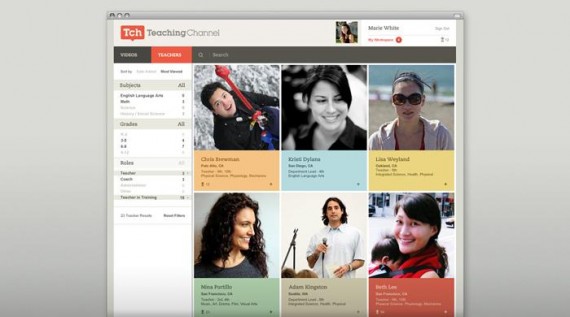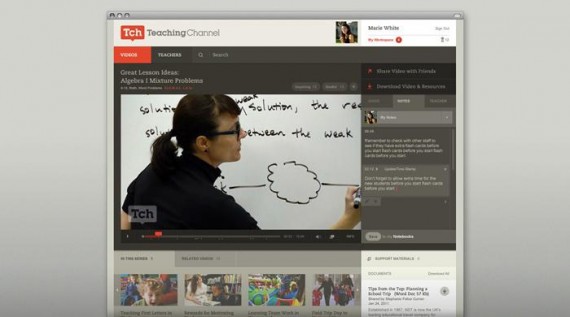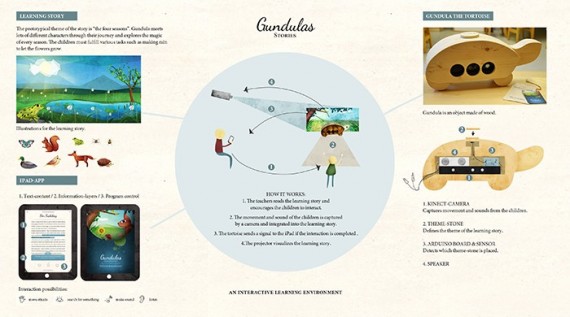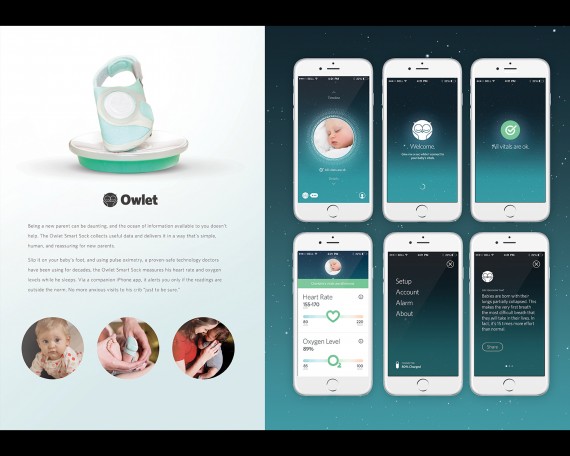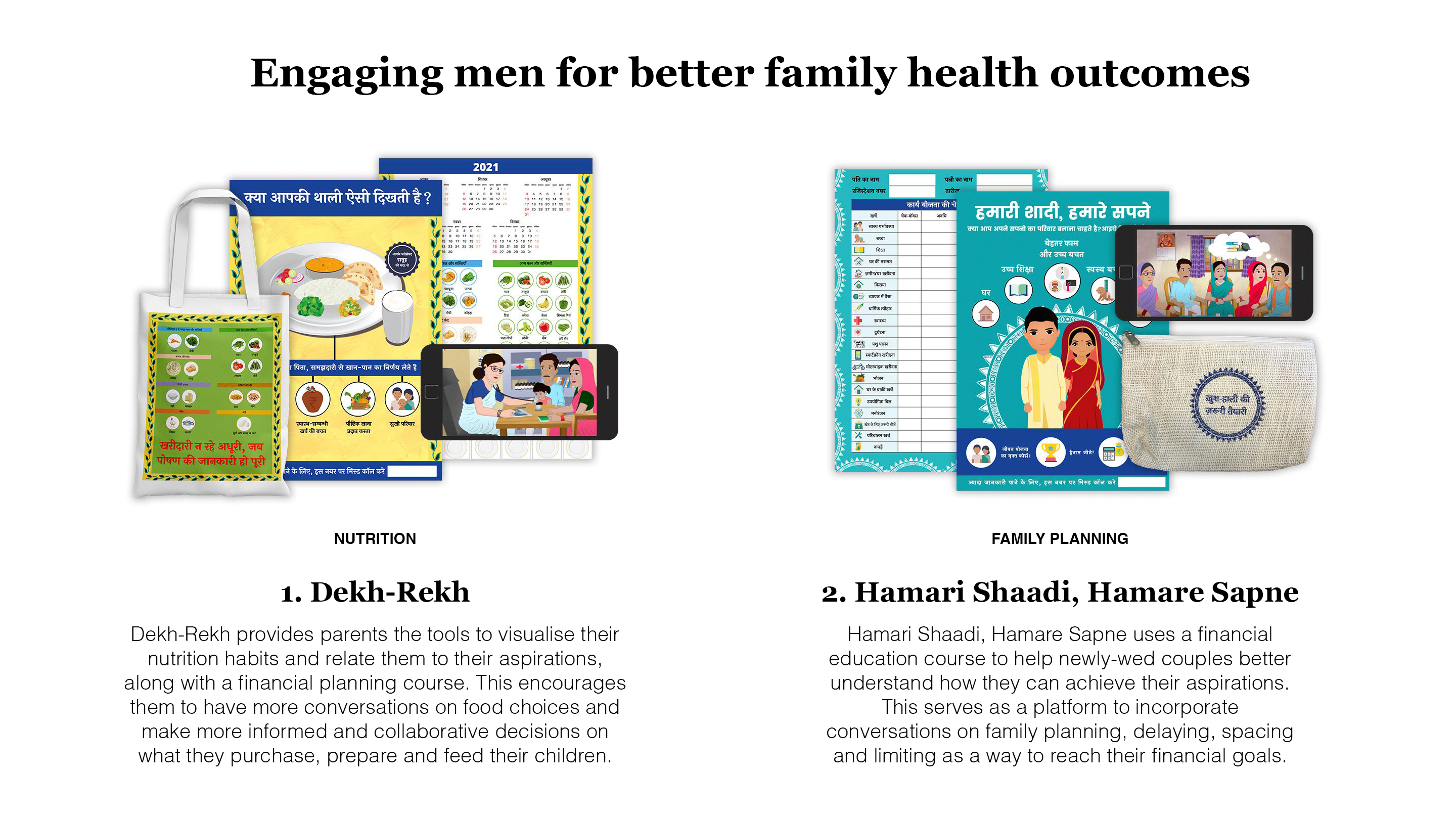Teaching Channel
Team
Company | Institution
Category
Type
Project description
The Teaching Channel website creates a much-needed resource for time-strapped teachers in all stages of education and all types of schools, helping them find useful examples of teaching methods along with the support materials they need to implement these methods into their own classrooms. Teaching Channel enables them to get support and inspiration from their peers, with the eventual aim of instilling pride in those who are engaged in what is often a difficult but essential profession. It reinforces the importance of the craft of teaching by delivering content in a high-quality experience not often associated with educational resources on the web. We also realize that the discussion and information that enables teachers to improve their craft carries the most meaning when shared with other teachers that share similar teaching environments such as class size, subject of focus, or grade level. This insight forms the foundation for the design of the community features within the website, ensuring that teachers can easily find other teachers like them, and "follow" and learn from these similar teachers within discussions sparked by the video content.
Context
We began by researching the intended users of Teaching Channel – teachers. We interviewed local teachers across the Bay Area and collaborated closely with the Teaching Channel team, many of whom are former education professionals, in order to get an understanding of the challenges that teachers face. From the research, we got a sense of the passion teachers bring to their work, which was critical in designing the features of the site.
An example of how we explored this in the Teaching Channel experience was by balancing the ability for teachers to find specific information they searched for while also simultaneously allowing for the discovery of serendipitous content – our search mechanism had to promote discovery and inspiration, so we thought about search outside of conventional keywords. Coupled with a faceted browsing system, teachers can filter keywords to discover content, thereby facilitating “happy accidents.”
Since video is at the heart of the experience, we aimed to make the video more of an interactive experience, designing a unique notebook feature that allows users to attach notes to specific points of interest in a video. These notes can be saved and shared, further fostering the sharing of knowledge among the teaching community.
Impact
Since the launch of the Teaching Channel website to public beta in June 2011, teachingchannel.org has grown 11,000% (eleven thousand percent) in number of users to 70,000 unique visitors per month.
Teaching Channel is continuing to help their growing community of teachers improve their craft, create a larger impact in their classrooms, foster a sense of a wider teaching community and, ultimately, create a sense of pride in the craft of teaching.
The content on the Teaching Channel website also exists in partnership with the “Teaching Channel Presents” TV programming, shown nationwide on public television, which maintains the brand language and intent developed from our original research.
Craft
In the design of the Teaching Channel website, we regularly brought in teachers to help participate in the design process. After our initial interviews, we launched the site with a 700 teacher beta phase, and incorporated feedback from this phase gathered by email, and ran validation testing.
This feedback and input was immensely valuable in further informing our design decisions around search, the usefulness of video, and how to build and maintain community engagement, as well as enabling us to iterate on the design of the tools and discussions we had created.
In addition to deeply examining the experience design of the site, Method also felt it important to look at how the overall brand language affected the experience. We created a Teaching Channel mark and developed a language and system for their brand that reflected their actionable approach and reinforced the core concept of community participation.
The use of qualitative and teacher centered research, communication with the client team, user testing, and close collaboration between disciplines (experience design, visual design, and technology) allowed us to create an effective and engaging platform for teachers, and place the Teaching Channel at the center as a champion of the teaching community.
Context
We began by researching the intended users of Teaching Channel – teachers. We interviewed local teachers across the Bay Area and collaborated closely with the Teaching Channel team, many of whom are former education professionals, in order to get an understanding of the challenges that teachers face. From the research, we got a sense of the passion teachers bring to their work, which was critical in designing the features of the site.
An example of how we explored this in the Teaching Channel experience was by balancing the ability for teachers to find specific information they searched for while also simultaneously allowing for the discovery of serendipitous content – our search mechanism had to promote discovery and inspiration, so we thought about search outside of conventional keywords. Coupled with a faceted browsing system, teachers can filter keywords to discover content, thereby facilitating “happy accidents.”
Since video is at the heart of the experience, we aimed to make the video more of an interactive experience, designing a unique notebook feature that allows users to attach notes to specific points of interest in a video. These notes can be saved and shared, further fostering the sharing of knowledge among the teaching community.
Impact
Since the launch of the Teaching Channel website to public beta in June 2011, teachingchannel.org has grown 11,000% (eleven thousand percent) in number of users to 70,000 unique visitors per month.
Teaching Channel is continuing to help their growing community of teachers improve their craft, create a larger impact in their classrooms, foster a sense of a wider teaching community and, ultimately, create a sense of pride in the craft of teaching.
The content on the Teaching Channel website also exists in partnership with the “Teaching Channel Presents” TV programming, shown nationwide on public television, which maintains the brand language and intent developed from our original research.
Craft
In the design of the Teaching Channel website, we regularly brought in teachers to help participate in the design process. After our initial interviews, we launched the site with a 700 teacher beta phase, and incorporated feedback from this phase gathered by email, and ran validation testing.
This feedback and input was immensely valuable in further informing our design decisions around search, the usefulness of video, and how to build and maintain community engagement, as well as enabling us to iterate on the design of the tools and discussions we had created.
In addition to deeply examining the experience design of the site, Method also felt it important to look at how the overall brand language affected the experience. We created a Teaching Channel mark and developed a language and system for their brand that reflected their actionable approach and reinforced the core concept of community participation.
The use of qualitative and teacher centered research, communication with the client team, user testing, and close collaboration between disciplines (experience design, visual design, and technology) allowed us to create an effective and engaging platform for teachers, and place the Teaching Channel at the center as a champion of the teaching community.

